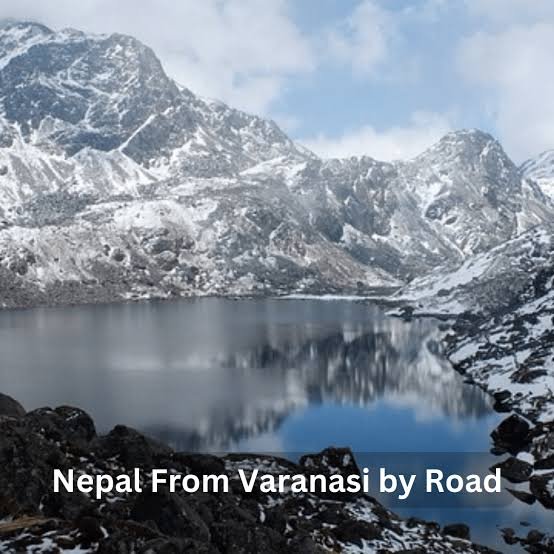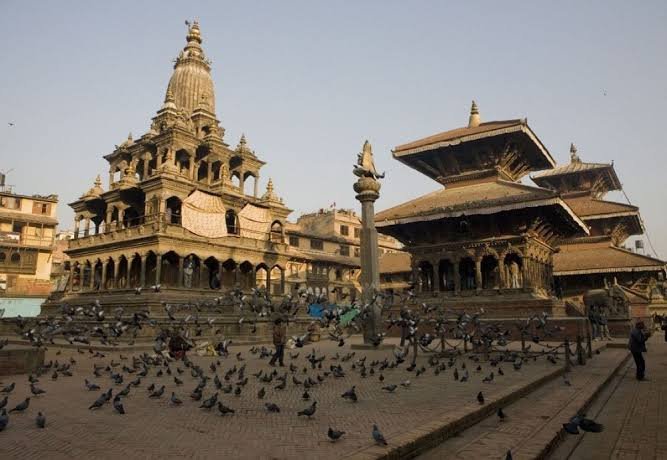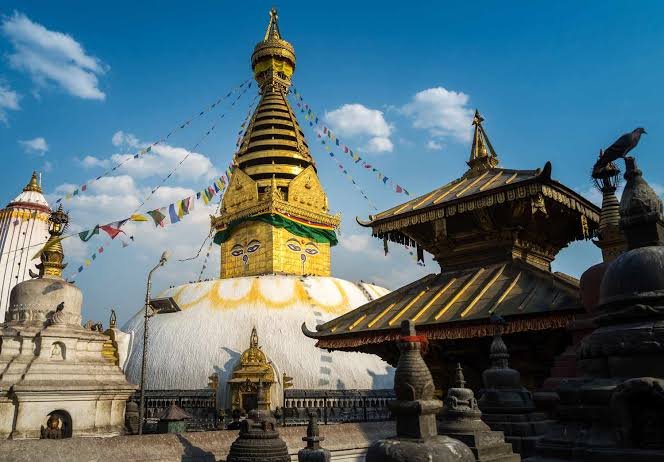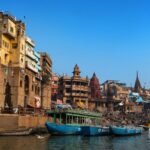Introduction
Traveling from Varanasi to the Nepal border will soon be a hassle-free journey, thanks to the construction of a new four-lane highway. This project will drastically cut down travel time, enabling passengers to reach the Indo-Nepal border at Sonauli in just five hours. Additionally, the route from Varanasi to Gorakhpur will be covered in only two hours, making it a significant infrastructural development for the region.

This ambitious project, undertaken by the National Highways Authority of India (NHAI), aims to enhance connectivity between two crucial regions of Uttar Pradesh—Varanasi and Gorakhpur. Moreover, an 80-km expressway is being developed from Gorakhpur to the Sonauli border, which will further facilitate smooth travel between India and Nepal. Let’s explore the details of this remarkable initiative.
Current Scenario: Varanasi to Nepal Border Travel
At present, traveling from Varanasi to the Nepal border takes over seven hours due to road congestion, single-lane stretches, and multiple bottlenecks along the route. This not only results in inconvenience for tourists and traders but also slows down economic and cultural exchanges between India and Nepal. The introduction of the new four-lane road and expressway is expected to significantly improve travel conditions.
Varanasi-Gorakhpur Four-Lane Highway
The development of a four-lane highway from Varanasi to Gorakhpur is a crucial step in this project. Once completed, it will allow passengers to travel between the two cities in just two hours. Key highlights of this project include:

- Total Length: Approximately 65 km
- Cost: Nearly INR 1,000 crore
- Major Developments: A bridge over the Ghaghra River to ease traffic flow
- Completion Timeline: Expected by the end of 2024
According to NHAI regional officer SK Arya, one side of the bridge over the Ghaghra River was already operational, and the second side has now been opened for public use. This has already improved connectivity between Varanasi and Gorakhpur.
Gorakhpur to Sonauli Expressway
To further streamline travel to Nepal, an 80-km-long expressway is being constructed from Gorakhpur to Sonauli. This expressway is estimated to cost INR 1,500 crore and is expected to be operational by the end of 2025. Once completed, it will serve as a dedicated national highway, ensuring a seamless travel experience for passengers heading toward Nepal.
Key features of the expressway:
- Total Length: 80 km
- Cost: INR 1,500 crore
- Completion Target: End of 2025
- Significance: Provides a fast and smooth connection to Nepal for travelers, businesses, and pilgrims
Economic and Social Impact
The new highway project is expected to have a far-reaching impact on multiple sectors, including trade, tourism, and local economies.
1. Boost to Tourism
Varanasi, being one of the most prominent pilgrimage destinations in India, attracts a large number of international and domestic tourists. Many travelers visiting Varanasi also plan trips to Nepal, particularly to places like Lumbini, the birthplace of Lord Buddha. The improved road infrastructure will make it easier for pilgrims and tourists to travel seamlessly between these two destinations.
Additionally, popular tourist attractions like the Pashupatinath Temple in Nepal will become more accessible to devotees traveling from India. The reduced travel time will encourage more visitors, boosting the tourism industry on both sides of the border.

2. Enhancing Trade and Commerce
The Indo-Nepal trade route is a vital economic corridor, with significant trade activities taking place through the Sonauli border. Faster transportation of goods will benefit industries such as textiles, agriculture, and manufacturing. It will also help reduce logistical costs and improve supply chain efficiency.
The project is expected to facilitate the transportation of perishable goods such as fruits, vegetables, and dairy products between India and Nepal. This will not only benefit local farmers but also enhance bilateral trade, strengthening economic ties between the two nations.
3. Employment Generation
The construction of the highway and expressway will generate employment opportunities for thousands of workers in the region. Additionally, better connectivity will encourage the establishment of businesses such as hotels, restaurants, and service centers along the route, further boosting employment.
Apart from direct employment, indirect job opportunities will arise in industries such as tourism, logistics, and retail. The improved road infrastructure will attract investors, leading to the development of new business hubs in the region.
4. Enhanced Connectivity for Border Communities
People living in the border areas often face difficulties due to poor road conditions. The new road will facilitate better access to healthcare, education, and markets, improving the quality of life for many.
With improved connectivity, people from Nepal will have better access to medical facilities in Indian cities like Gorakhpur and Varanasi. This will be particularly beneficial for patients requiring specialized treatment, as they will be able to reach hospitals quickly and efficiently.
Challenges and Solutions
Despite the benefits, large-scale infrastructure projects come with their own set of challenges. Some of the key concerns and their potential solutions include:
1. Land Acquisition
Acquiring land for the highway has been a challenge in some areas. The government is addressing this issue by ensuring fair compensation and rehabilitation measures for affected landowners.
Local authorities are working closely with residents to resolve disputes and ensure that the land acquisition process is carried out smoothly. Special efforts are being made to minimize displacement and provide alternative livelihood opportunities to those affected.
2. Environmental Concerns
Infrastructure development can lead to environmental concerns such as deforestation and habitat disruption. Authorities are implementing eco-friendly construction practices, including tree replantation and proper waste management systems.

To offset the impact on the environment, afforestation programs are being planned along the highway route. Green corridors will be developed to maintain ecological balance and reduce pollution levels.
3. Funding and Budget Constraints
With an estimated cost of over INR 2,500 crore for the entire project, funding is a crucial factor. The government is exploring public-private partnerships (PPP) and international financial assistance to ensure timely completion.
The involvement of international agencies and private investors will help in securing the necessary funds and ensuring that the project is completed within the stipulated timeline.
Future Prospects
This highway project is just the beginning of a broader effort to enhance regional connectivity. The Indian government has been actively investing in road infrastructure to improve interstate and international trade routes. In the future, we may see:
- Expansion of expressways to other border crossings
- Integration with railway networks for multimodal transport
- Improved digital infrastructure for smoother toll payments and real-time traffic updates
Additionally, efforts are being made to improve cross-border infrastructure, including the development of modern customs facilities and border checkpoints. This will help in reducing waiting times at border crossings and facilitating hassle-free travel.
Conclusion
The upcoming Varanasi-Nepal highway and expressway will be a transformative development for the region. By reducing travel time from over seven hours to just five, the project will bring immense benefits to travelers, businesses, and local communities. The enhanced connectivity will not only boost tourism and trade but also contribute to the overall socio-economic growth of Uttar Pradesh.

As the construction progresses toward completion by 2025, residents and travelers can look forward to a faster, safer, and more efficient road network connecting Varanasi, Gorakhpur, and Nepal. With this initiative, India is taking a significant step toward strengthening cross-border relations and improving regional connectivity for a better future.







